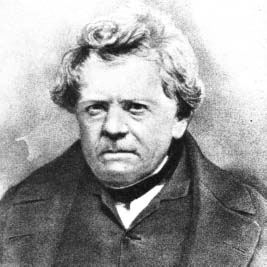Math in the Physical SciencesClassical Physics and Mathematics |
What is Ohm’s Law? |
Ohm’s Law is important to the field of electrical studies. It states that direct current flowing in a conductor is directly proportional to the potential difference between its ends. First summarized by German physicist Georg Simon Ohm (1789–1854), it is usually seen in formula form as: V = IR (or I = V/R), in which V is the potential difference (voltage), I is the current (also written in some texts as i), and R is the resistance of the conductor. This can also be written in terms of electric quantities (voltage = current × resistance) and with units of measure (volts = amps × ohms).

Georg Ohm discovered the law about how electrical currents flow through a conductor.
